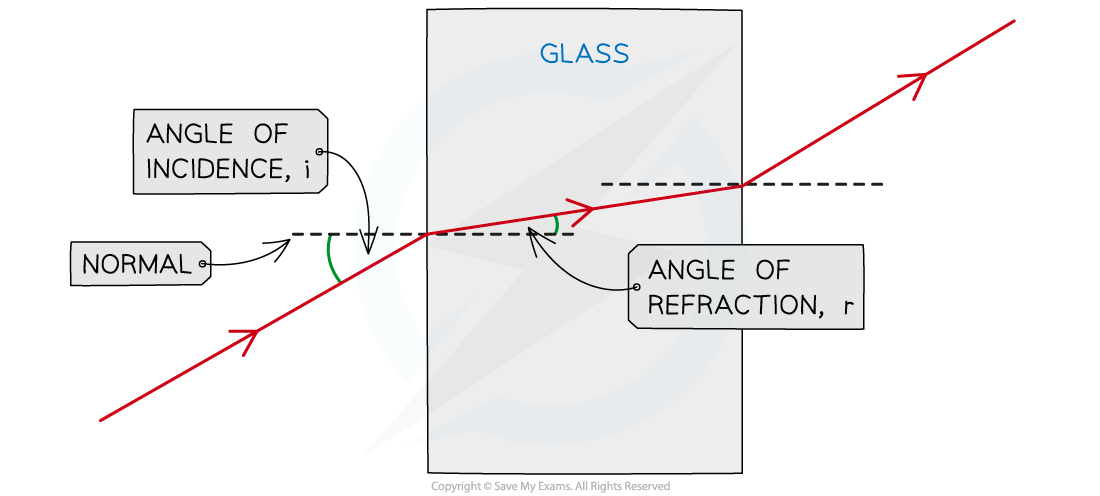Reflection & Refraction (Edexcel GCSE Physics) : Revision Note
Did this video help you?
Reflection
Reflection occurs when:
A wave hits a boundary between two media and does not pass through, but instead stays in the original medium
Light, sound and water waves can all be reflected
The reflection of light waves is seen in a mirror
Angles are measured between the wave (ray) direction and a line at 90 degrees to the boundary (the normal)
The angle of the wave approaching the boundary is called the angle of incidence (i)
The angle of the wave leaving the boundary is called the angle of reflection (r)
The law of reflection states that these angles are the same:
Angle of incidence (i) = Angle of reflection (r)
When drawing a ray diagram, an arrow is used to show the direction the wave is travelling
An incident ray has an arrow pointing towards the boundary
A reflected ray has an arrow pointing away from the boundary
The angles of incidence and reflection are usually labelled i and r respectively

Reflection of a wave at a boundary
Examiner Tips and Tricks
When drawing ray diagrams, a simple line with an arrow is enough to represent the wave. Make sure these are drawn with a ruler or a straight edge to be as neat as possible, and don't forgot to label the direction of the arrow!
Did this video help you?
Refraction Ray Diagrams
Refraction occurs when light passes a boundary between two different transparent media
At the boundary, the rays of light undergo a change in direction because the light changes speed
The direction is taken as the angle from a hypothetical line called the normal
This line is perpendicular to the surface of the boundaries and is usually represented by a straight dashed or dotted line
The change in direction depends on which media the light rays pass between:
From less dense to more dense (e.g air to glass), light bends towards the normal
From more dense to less dense (e.g. glass to air), light bends away from the normal
When passing along the normal (perpendicular) the light does not bend at all

How to construct a ray diagram showing the refraction of light as it passes through a rectangular block
The change in direction occurs due to the change in speed when travelling in different substances
When light passes into a denser substance the rays will slow down, hence they bend towards the normal
The only properties that change during refraction are speed and wavelength – the frequency of waves does not change
Different frequencies account for different colours of light (red has a low frequency, whilst blue has a high frequency)
When light refracts, it does not change colour (think of a pencil in a glass of water), therefore, the frequency does not change
Worked Example
The diagram below shows two parallel rays of light entering and passing through prism A and prism C.

Draw a third parallel ray entering and passing through prism B.
Answer:
Step 1: Draw a parallel ray on the left

Step 2: Draw the refracted ray at the first surface

As the ray enters the block it bends towards the normal since it is going into a denser material
In this case, the angle of refraction is smaller than the angle of incidence
Step 3: Draw the refracted ray at the second surface

As the ray leaves the block it bends away from the normal
In this case, the angle of refraction is larger than the angle of incidence
Examiner Tips and Tricks
Practice drawing refraction diagrams as much as you can! It's very important to remember which way the light bends when it crosses a boundary:As the light enters the block it bends towards the normal line
Remember: Enters Towards
When it leaves the block it bends away from the normal line
Remember: Leaves Away

You've read 0 of your 5 free revision notes this week
Sign up now. It’s free!
Did this page help you?
